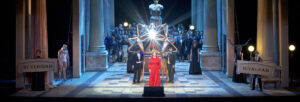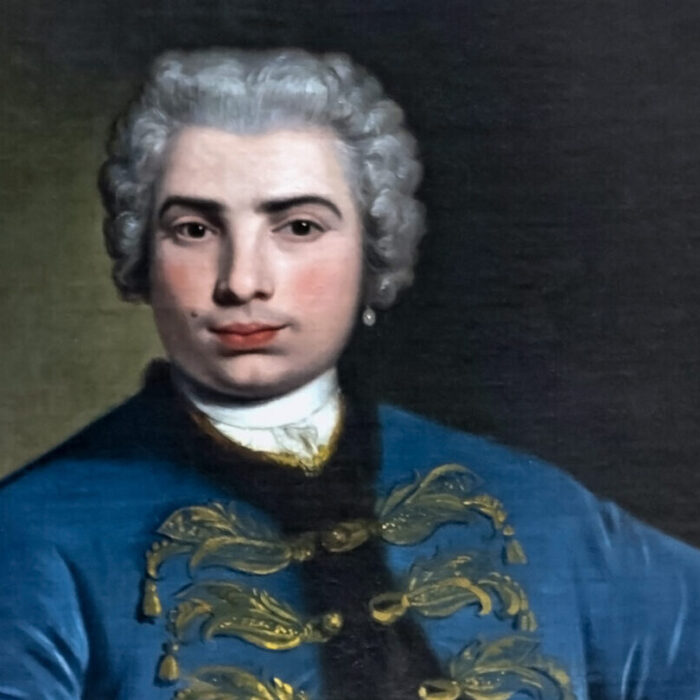
The Person Behind The Opera, Pt. 3: Beatrice Cenci
By John VandevertPhoto Credit: Arnaldo Colombaroli/Teatro Colon.
Throughout opera, one can find tales of undeserved execution, unjust torture, and brutal treatment. Yet, one can also find tales of noble bravery, stalwart moral goodness, and uncompromisable virtue. Two sides of human nature, brutality is often not far from humanity and in opera, we are able to see this in spades. These stories, however, are far from just fiction or stuck in the past. Rather, they live on in the present through these stories being given contemporary form through the incorporation of stories connected to our world today.
For part three of The Person Behind The Opera, a new five-part series exploring five operas based on real-life figures who all faced different forms of opposition and hardship during their time, we will explore a tragic figure within Italian history. I am talking about Beatrice Cenci (1577-1599), who, at the age of 22, was beheaded for having worked with her family members to kill her father, Count Francesco Cenci. Tired of the abuse inflicted upon her and her family, his death by blugeoning was later exposed through torture and jailing, resulting in convictions for all four of the family members (mother, two sons, and daughter),and later execution.
Her operatic immortalization came during the 20th century came in the form of four composers, Berthold Goldschmidt (Beatrice Cenci, 1949), Havergal Brian (The Cenci, 1951), Alberto Ginastera (Beatrix Cenci, 1971), and finally James Rolfe (Beatrice Chancy, 1998). The last of the operas was premiered on June 18 in Toronto, Canada with the Queen of Puddings Music Theatre Company. The libretto was written by lauded poet George Elliott Clarke based upon Percy Bysshe Shelley‘s five-act verse drama, ‘The Cenci. A Tragedy, in Five Acts,’ writen in 1819. Given the salacious themes contained, it was never peformed during his life and only first seen on stage in 1885, the first performance taking place in 1922. Interestingly, Rolfe’s opera was premiered the same year Goldschmidt’s opera received its first UK premiere, taking place in July at Trinity Laban Conservatoire.
What is known about Beatrice the real woman is tied mostly to her family (the Cenci), whose history is full of violence and bloodshed to various degrees. Beatrice was the daughter (via the first wife) of Francesco Cenci, son of a wealthy father and nobleman. He married his first wife, Ersilia Santacroce, at 14, and was the father of 14 children in total. His second wife, Lucrezia Petroni, came with six children, and because of Francesco’s uncontrolled spending, debts were amassed extremely quickly. By the late 1590s, his health was declining and given his eldest daughter had escaped him to live in a convent, to avoid any other children leaving him, he moved to a remote castle in Petrella Salto whereupon his drinking and violent behaviour increased.
Determined to change things, a cohert of individuals, his second wife, children, and accomplices, set out to kill him. On September 9, 1598, after consuming high doses of opium, he was blugeoned to death and his body thrown over a patio balustrade. Naturally, they were discovered and the rest is history.
Upon discovery, Beatrice and Lucrezia were imprisioned in Corte Savella, and on September 11, they were beheaded, an event attended by at least three notable painters, among them Caravaggio, or Michelangelo Merisi. The entire affair was incredibly hectic, with many losing their lives because of the crowds, ill-fitting blocks for Beatrice’s body shape, and riots attempting to stop the execution all together. The Cenci family basically collapsed after the executions as their assets were ceased and expensive lawsuits commenced. If anything, Beatrice’s story is a story of how tumultuous it is to pursue justice, especially in the face of adversity like death and retribution.
Listen
Categories
Special Features

